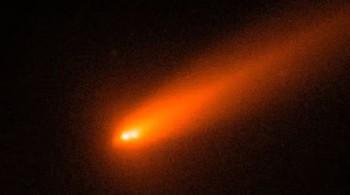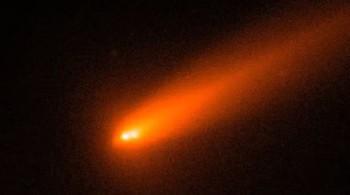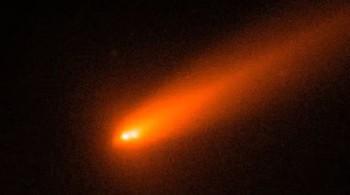
Comet C/2025 K1 (ATLAS) breaks into 3 after coming close to Sun
Comets have long been a source of fascination for astronomers and space enthusiasts alike. These icy bodies, originating from the outer reaches of our solar system, offer a glimpse into the early formation and evolution of our cosmic neighborhood. Recently, a remarkable event has captivated the attention of the scientific community: Comet C/2025 K1 (ATLAS) has broken into three distinct pieces after making a close approach to the Sun. This extraordinary occurrence was captured by astronomers using Italy’s Copernicus telescope, providing a unique opportunity to study the dynamics of cometary fragmentation.
The Comet C/2025 K1 (ATLAS) was first discovered in May 2025 by the Asteroid Terrestrial-impact Last Alert System (ATLAS), a robotic astronomical survey system designed to detect near-Earth asteroids and comets. Initially, the comet was predicted to make a close approach to the Sun, with astronomers anticipating a spectacular display of cometary activity. However, as the comet drew closer to the Sun, its behavior became increasingly unpredictable.
On October 8, Comet C/2025 K1 (ATLAS) reached its perihelion, the point of closest approach to the Sun. As it swung by the Sun, the comet’s nucleus began to exhibit signs of instability. The intense heat and radiation emanating from the Sun caused the comet’s ices to vaporize, leading to a rapid expansion of gases and dust. This process, known as outgassing, is a common phenomenon observed in comets as they approach the Sun.
However, in the case of Comet C/2025 K1 (ATLAS), the outgassing process had a more dramatic consequence. As the comet’s nucleus became increasingly unstable, it began to break apart, fragmenting into three distinct pieces. The two largest chunks, estimated to be approximately 2,000 kilometers apart, are now drifting away from each other, while a smaller, third piece has separated from the main fragments, visible to the left of the pair.
Astronomers were able to capture stunning images of the comet’s fragmentation using Italy’s Copernicus telescope. The telescope’s advanced imaging capabilities allowed scientists to study the comet’s breakup in unprecedented detail, providing valuable insights into the dynamics of cometary fragmentation. The images reveal a complex, chaotic scene, with gas and dust streaming away from the comet’s nucleus as it disintegrates.
The breakup of Comet C/2025 K1 (ATLAS) offers a unique opportunity for scientists to study the internal structure and composition of comets. By analyzing the fragments and their behavior, astronomers can gain a better understanding of the comet’s origins and evolution, as well as the processes that govern its disintegration. Furthermore, this event provides a fascinating example of the complex, dynamic nature of comets, highlighting the importance of continued research and monitoring of these enigmatic objects.
As Comet C/2025 K1 (ATLAS) continues on its journey through the solar system, its fragments will likely follow distinct trajectories, offering scientists a chance to study the comet’s evolution over time. The breakup of the comet also raises questions about the potential risks associated with cometary fragmentation, particularly if similar events were to occur in the future. While the likelihood of a cometary fragment impacting Earth is low, the study of Comet C/2025 K1 (ATLAS) serves as a reminder of the importance of continued monitoring and research into the behavior of comets and other near-Earth objects.
In conclusion, the breakup of Comet C/2025 K1 (ATLAS) is a remarkable event that has captivated the attention of astronomers and space enthusiasts around the world. The comet’s fragmentation offers a unique opportunity to study the internal structure and composition of comets, as well as the dynamics of cometary disintegration. As scientists continue to monitor the comet’s fragments, we can expect to gain a deeper understanding of the complex, dynamic nature of comets and their place in our solar system.




